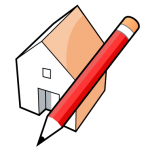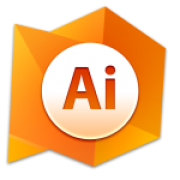 Description: All the steps needed to do a basic preliminary 3D site plan are included in these videos, which are linked below at the beginning of each bullet point. The text following each link serves as a reference guide if you need to go back to the video. Note: To get the most out of the videos in youtube, toggle full-screen and HD using the settings in the lower right of the youtube screen.
Description: All the steps needed to do a basic preliminary 3D site plan are included in these videos, which are linked below at the beginning of each bullet point. The text following each link serves as a reference guide if you need to go back to the video. Note: To get the most out of the videos in youtube, toggle full-screen and HD using the settings in the lower right of the youtube screen.
Author: Dr. Austin Troy, College of Architecture and Planning
Access all videos in one playlist

Step 1: Getting started. Download the Sketchup free version. Open Sketchup
Step 2: Acquire Imagery and location (click for video): This step uses an easy interface to grab the background aerial image for your site and, in the process, give your model real world location information. Note that while you can show terrain relief (which will be slight) by clicking File>>Geolocation>>show terrain, we recommend not using it now, as it adds a whole additional layer of complexity. I will add more tutorial material later on how to deal with this, but for now, just try viewing and go back to normal flat mode. Also note that when “grabbing” your imagery from Google Earth, make the window as large as possible to maximize the resolution of the resulting base map image.
Step 3: Navigation: You’re now in 3D mode. Change the 3D perspective either using clicking the middle mouse button (track wheel) and moving around the screen while the wheel button is depressed or using the orbit button. You can zoom in and out by turning the track wheel or using the zoom tool, two over from Orbit. Pan using the hand. All this and more covered in the video
Step 4: Add blank ground layer: You’ll probably want to add a ground layer or pad to cover up the part of the air photo that your site is on, assuming that site is going to change. In other words, this will be the Canvas for your design. The video explains how to built that ground pad and fill it with a color or texture.
Step 5: And flat features: You’ll want to populate your ground pad with features. The video explains how to create 2D, flat geometric features like a driveway, and less geometric features like a meandering path or pond.
Step 6: Alter terrain: Dealing with real world terrain is a more advanced topic, but if you just want to add small invented terrain features, like a hill or depression, this video explains it.
Step 6.5: Draping features on terrain: This tutorial explains how to drape distributed features like roads or paths over 3D terrain, so that the features sit “on top” of the underlying terrain. Note that this uses a different study site than the other tutorials, as those areas have very little terrain relief
Step 7: Add small 3D objects: You’ll want some 3D features, like trees and light posts, or even people and cars. The video explains how to use the component and 3D warehouse browsers to look for smaller features to place on the landscape, like trees, how to resize them and how to rotate them. NOTE that in this tutorial I show how to download trees from the 3D warehouse. However, as the last video tutorial shows, the rendering plugin that I have you all download in the last step (Ariel Vision) has REALLY great trees and I very much recommend using those over the trees in the 3D warehouse, which means you should download Ariel Vision before you start working with 3d object placement.
Step 8: Add buildings and large structures: If you want to add buildings, this video explains how to use the component and 3D warehouse browsers to look for good buildings, add them to your model, rotate them, resize them, and eliminate superfluous elements, like the underlying pads.
Step 9: Render your model: Finally, you might want to render your design to give it high quality visuals. Most of the rendering plugins cost some money, but you can download trial versions which you can use for now and will greatly improve the look of the output. The one we’ll download here is called Ariel Vision and it comes with a 30 day free trial. Ariel Vision also includes hundreds of textures and materials you can apply to surfaces and a very nice library of trees, superior to most of the tree models on available in the warehouse. This video explains the process. Below is an example of what the same scene that I designed looks like rendered (first) and non-rendered (second).
Final Non-Rendered Site Plan:

Final Rendered Site Plan:








